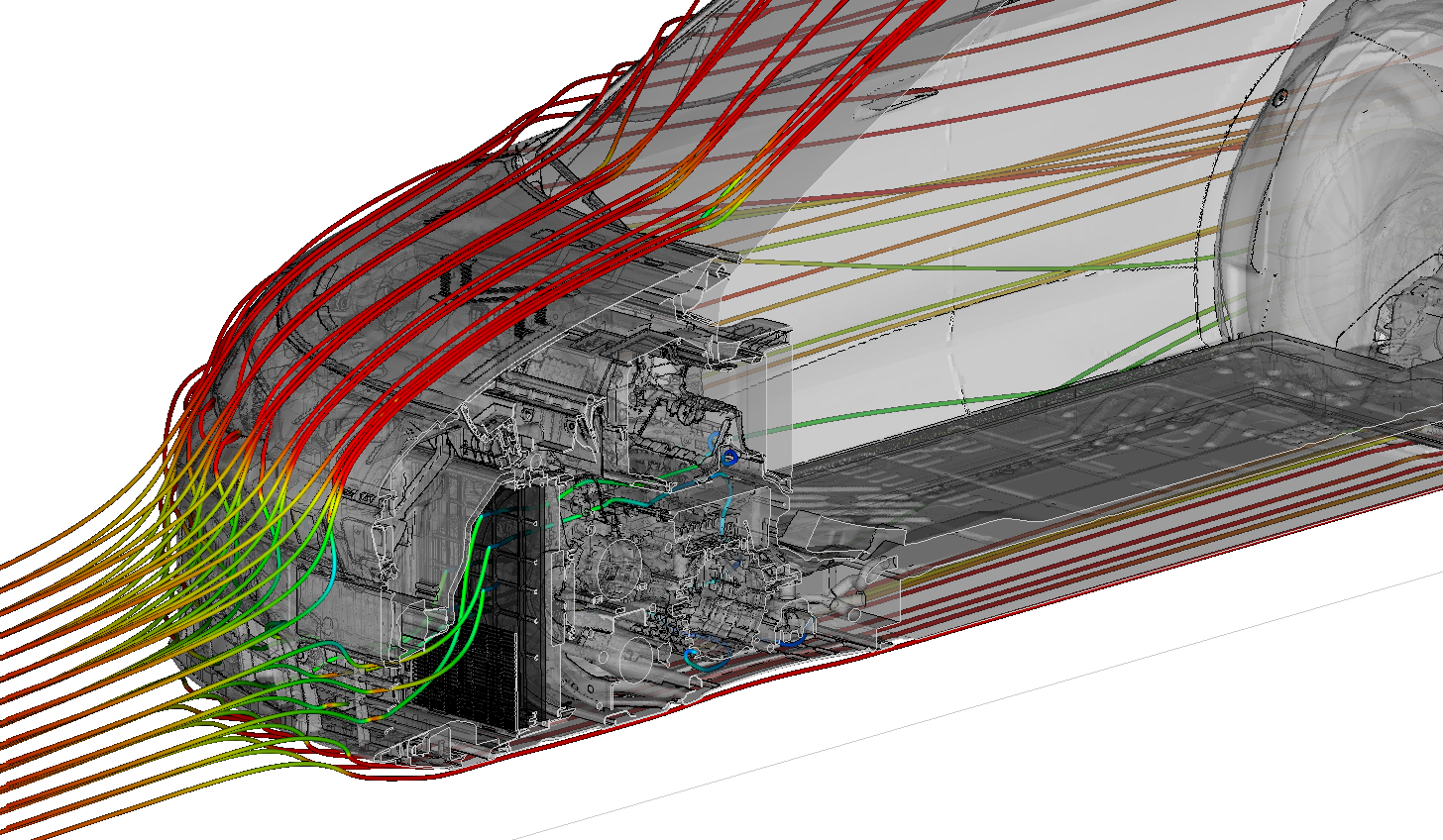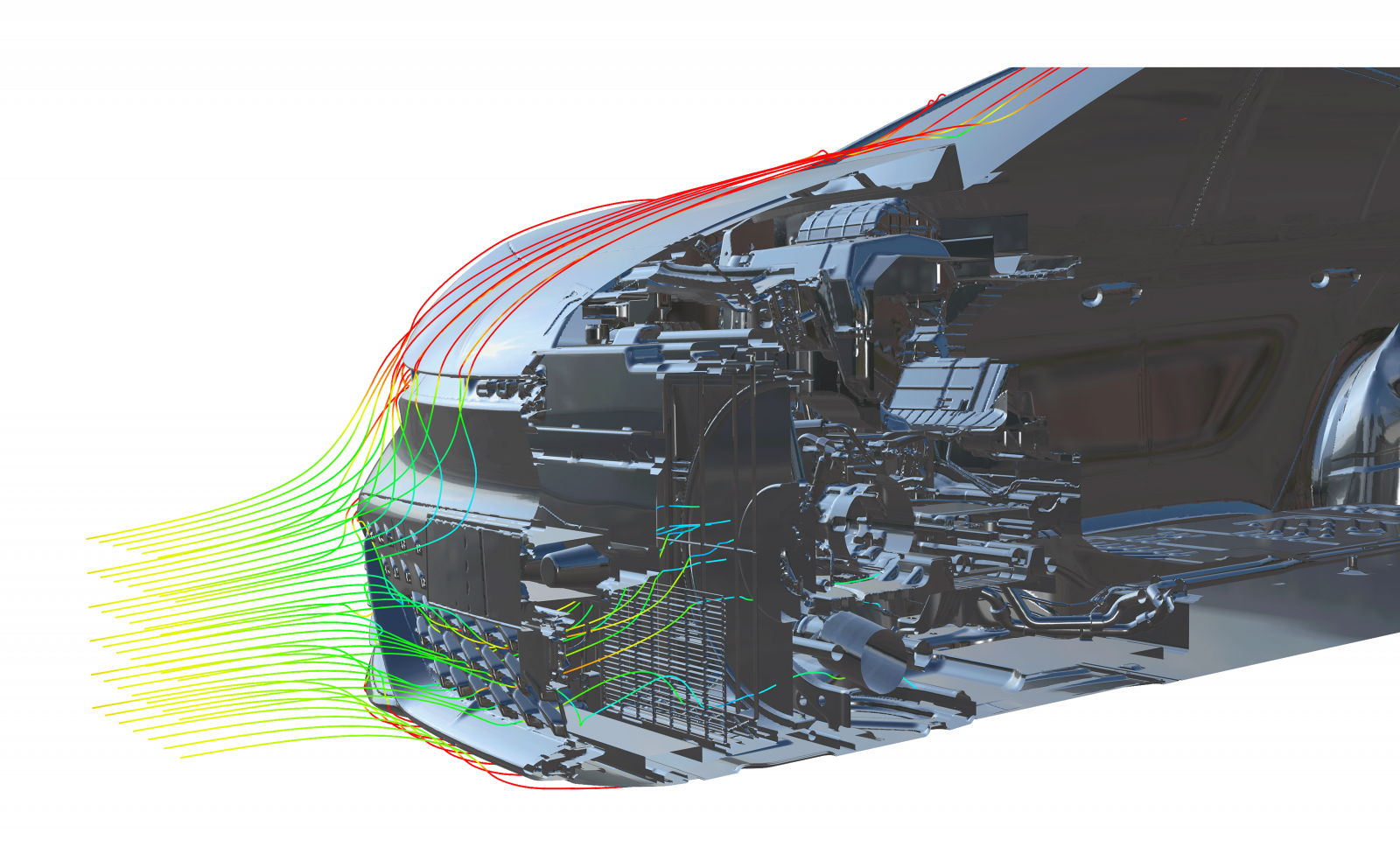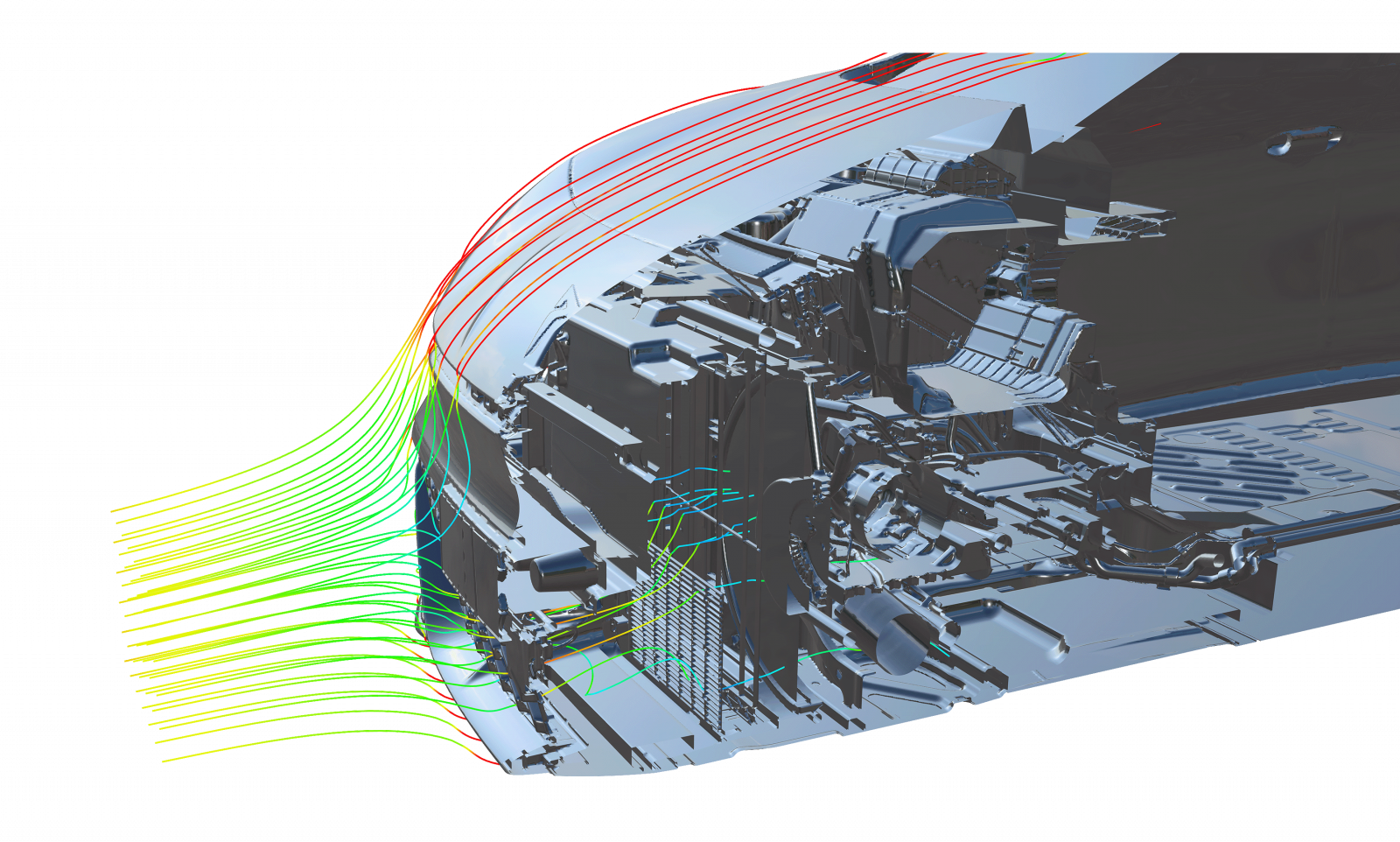Engine cooling
BACKGROUND
The engine cooling system is responsible for dissipating the heat produced during the operation of the engine in any mode of transport. During the generation of motive power, heat is always produced as a secondary product and is an undesired consequence in most cases. This occurs in internal combustion engines as well as in the increasingly more popular electric motors, so the use of a cooling system becomes essential in any mode of transport.
Computational fluid dynamics (CFD) help prevent and optimise the behaviour of the cooling system, as these always include an exchange of energy between the engine, the source of head and the surrounding environment, normally air or another fluid. Therefore, CFD simulation techniques are widely used during the design and development phase of these systems.
Since 2017, SOLUTE has gained an extensive and solid experience for customers in the automotive sector.
All transport vehicles use some type of engine to produce motive power. However, not all energy becomes movement, part of it becomes heat and this heat must be dissipated to ensure the integrity of the engine. The cooling system must transfer this excessive heat to the surrounding environment, which is normally air, and this transfer is done through fluids such as water or oil.
To tackle these types of thermal problems with associated fluid dynamics, the use of CFD techniques is extremely useful during the conception and design phase of cooling systems. Placing the focus on the automotive sector, the cooling function must combine a proper air flow with an attractive vehicle design for the customer. SOLUTE carries out advanced internal aerodynamic simulations (air flow going through a duct, the engine compartment in this case) to ensure the set requirements are met and using these techniques to direct the development towards an efficient design.
RESULTS
A report is generated with all the data obtained in the original cooling system and in the different proposals, and the most suitable option between them is selected based on the criteria defined by the customer.
The tasks of simulation and analysis of your results allow, in a very dynamic way, adopting alternatives to the design or concept when the results are unsatisfactory, as well as the optimisation of the geometries. This way, studies are provided with great added value in terms of the thermal and kinematic air flow inside the vehicle, with special emphasis on the temperature, pressure and distribution of current speeds.
EXPERIENCE
Since 2017, SOLUTE has experience carrying our internal combustion engine cooling simulations for different customers in the automotive sector.
Likewise, SOLUTE has the necessary know-how and experience to work on similar problems in the automotive sector as well as extend this knowledge to vehicles such as buses, trains or jet engines.
To carry out these calculations, commercial codes (ANSYS, ALTAR) as well as free use codes (OpenFOAM) are used, over which, even with differences in their origin, good practices in modelling standards prevail as well as the criteria of expert analysts and the basis of extensive experience.
METHODOLOGY
The analysis of the problem is carried out with CFD (Computational Fluid Dynamics) tools, using the Finite Volumes Method (FVM) or the Finite Elements Method (FEM), depending on the solver that is chosen. To carry out these calculations, commercial codes (ANSYS, ALTAR) as well as free use codes (OpenFOAM) are used, over which, even with differences in their origin, good practices in modelling standards prevail as well as the criteria of expert analysts and the basis of extensive experience
After a first study of the state of the art and the set objectives, models are created based on the geometry and on the case study. This way, the intent is to simplify and individualise the model, so that we can reach a compromise between the accuracy of the results and computational economics. In most situations, stationary simulations RANS (Raynolds-Averaged Navier Stokes) or their transitory variable URANS (unsteady RANS) will be used and sometimes, more expensive and accurate simulations may need to be used such as LES (Large Eddy Simulation).
Normally, CFD cooling calculations are supplemented with 1D simulations that represent the simplified operation of various components such as radiators, water pumps or cooling circuits within the overall system. CFD data is used to feed the 1D simulations, focused on the individual calculation of the different elements involved: calendars, radiators or fans.
Different scenarios need to be studied that contemplate all the physics and all the operating conditions, for which we will need to properly define the properties of the fluid, its domain and boundary conditions, in order to guarantee the system will operate properly at all times. This way, we can calculate and determine the parameters of interest in the model, such as distributions of pressure or speeds, the air flow that crosses the engine compartment or the system temperature.
Based on the results that are obtained, the validation of the original cooling system is studied and we participate in the optimisation process, considering other factors such as manufacturability, assembling or cost of the assembly, as well as the cooling requirement themselves. An aspect to be considered is that in most cases, engine cooling follows internal guidelines set by the manufacturer and are not governed by external regulations, however, an exception to this rule are the airworthiness directives required by the competent certifying body in aviation, such as Certification Specifications, CSs (published by the European Air Safety Agency, EASA, which is the European certifying authority) or the Federal Aviation Regulations, FARs, (published by the Federal Aviation Administration, FAA, the aviation authority in the United States).
In addition to the quantitative result, the tools that are used allow analysing the qualitative behaviour of the evaluated systems, detecting the areas that cause undesired operations and the regions that have potential for improvement. This way, once the first series of simulations are completed, proposals for improvement are made and the process is repeated until the optimum solution is achieved.
SOLUTE Engineers, with expert skills and know-how in aerodynamics, fluid mechanics and the behaviour of the fluid described by Navier-Stokes equations, are able to successfully interpret the results and identify possible solutions.
Automotive
Pedestrians´ protection
CAE development of a car body to optimise its design to avoid or minimise pedestrian injury in a potential collision.
Wind
Energy and weather forecast for renewable operators
Weather and energy forecast service through the training of artificial intelligence algorithms.


